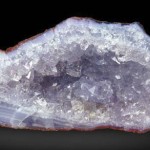
Near the border of Archuleta County in Colorado, Wolf Creek Pass and Treasure Mountain contain a deposit of silicates and zeolites that have made their way into mineral collections around the world. The collecting area, spread out over the rocky mountainside, is often referred to as Wolf Creek Pass. However, Wolf Creek Pass is actually a 10,000 foot mountain pass that wraps around Treasure Mountain and follows the Wolf Creek. The mountain does not bear gold or jewels, but the volcanic basalt deposits are near a very photogenic waterfall, Treasure Falls. Surrounded by scenic views, this basalt deposit is one of the most thrilling areas of Colorado. Hotels.com has great deals on hotels around Wolf Creek Pass, Colorado
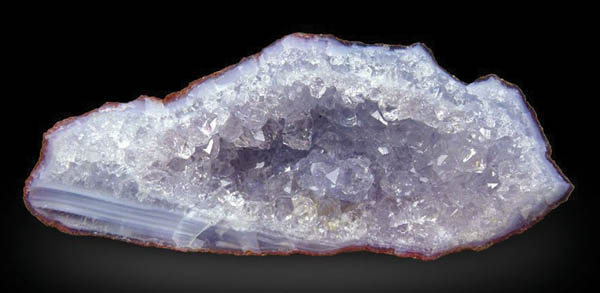
Quartz specimen with banded agate and a crystal center with a slight purple hue.
Photo by Mathew Marulla (marulla.com)
Treasure Mountain is named after the legendary stash of gold, left behind by a French expedition in 1790. Several search parties have tried to find the fortune of gold bars acquired from a gold deposit near the Peak of Treasure Mountain, but none have been successful in finding the bars or the deposit.
Much of the collecting area is adjacent to highway route 160 and in the boulders and exposed rock of the mountainside just north of the falls. The mineralized area is fairly large and boulders containing the material have been distributed across the area, both naturally and due to the construction of route 160 and Wolf Creek Pass. In fact, due to the close proximity to Archeuleta county to the south, part of the deposit crosses this manmade border separating the counties which only serves to cause confusion in geographic labeling of specimens from this deposit.
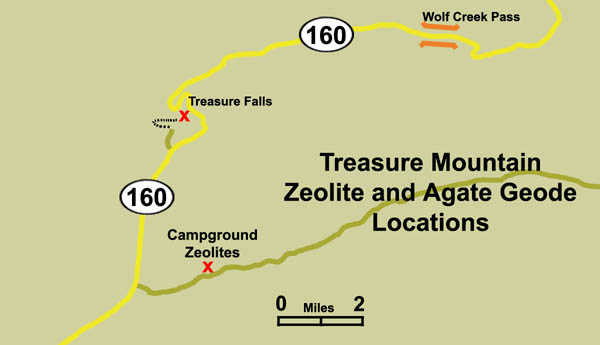
Map of the Agate and Zeolite locations around Wolf Creek.
Rounded amygdaloids fill the voids in the volcanic deposit of basalt, as with many occurences. These host crystals of quartz and about half a dozen zeolite minerals.
The quartz and agate are similar to that found in many other volcanic silica deposits. The agate is typically clear, white and/or shades of blue, often with alternating layers that make it desirable for lapidary use. Some have crystallized centers. Typically the crystals form on a layer of agate, which varies in thickness from miniscule shells to thick rinds. Sometimes the crystals are amethyst, making attractive specimens on dark colored volcanic matrix. Though the agate and quartz found here do not rival that found at many other locations, it is one of only a few still open for collecting.
Of course, the zeolite species are what makes the location a true Colorado classic. Analcime is typically found as very small crystals usually below 1 cm in size. However, at one location, analcime is found up to 3.5 cm. Chabazite occurs here, but not in crystals larger than a few millimeters in size. Heulandite is sometimes found as crystals up to 5 cm across. However, typically the crystals are only millimeters in size, lining the cavities and serving as matrix to other minerals. One such mineral is mordenite, which is found as well formed clusters of white fibers. These clusters, up to a few centimeters in size, were referred to as being one of the best locations for the species in the United States for many years.
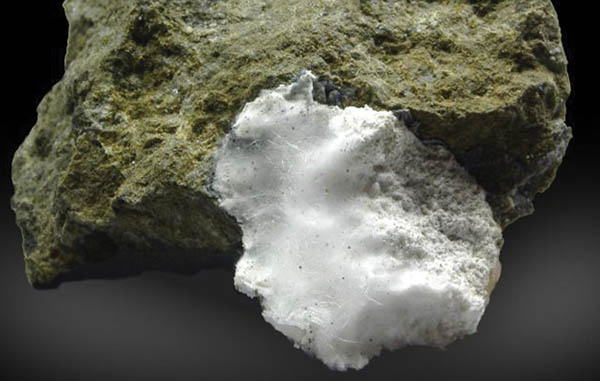
Mordenite crystals in a vug of basalt
Photo by Mathew Marulla (marulla.com)
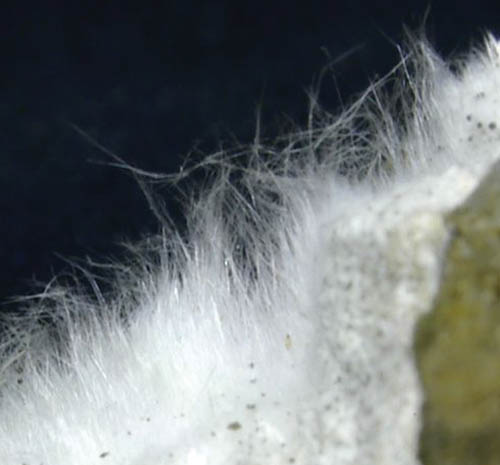
Mordenite Crystals up to 2 cm long can be found at the location
Photo by Mathew Marulla (marulla.com)
Other associated minerals include globular common opal, small rhombs of calcite, and small pyrite crystals. The locality is also a classic locality for the clay minerals celadonite and nontronite, which form in abundance. Laumonite, natrolite and wellsite also occur in the deposit, but they occur rarely and only as small crystals
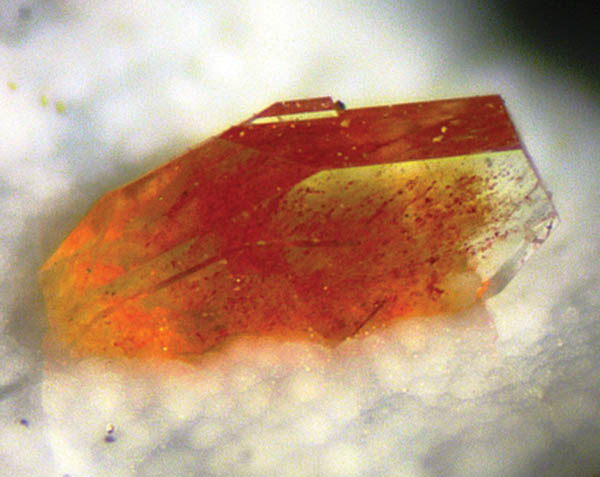
Isolated Heulandite crystal on matrix. Specimen size is 6 millimeters
Photo by Luigi Mattei
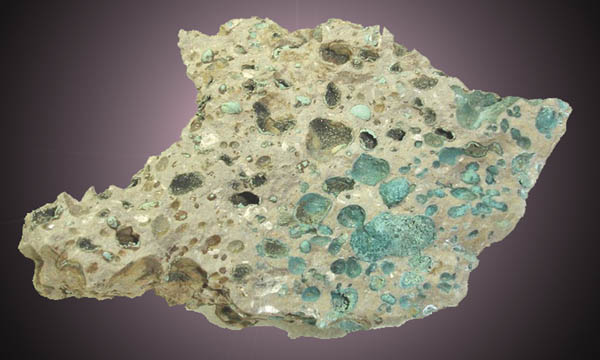
Several voids filled with celadonite overall size 10 x 5 x 3 cm.
Photo by Martins da Pedra
Due to the vast deposit and mountain conditions, this source of colorful quartz, agate and zeolites will always exist in the mountains of Colorado. Maybe the lack of gold is a bit disappointing for a mountain with such high aspirations, but to many mineral collectors around the world, the real treaures are the mineral collecting opportunities and the often-visited Treasure Falls.
If you enjoyed this article, it was originally printed in The-Vug.com Magazine, which was released as a hardcover coffee table book, collecting all 16 issues of the original magazine. It is 324 pages, hardcover and full color, available directly from the publisher at FortySevenPress.com For $34.95, it is full of great photos, articles, collecting locations and more! Get your copy to add to your mineral book library!